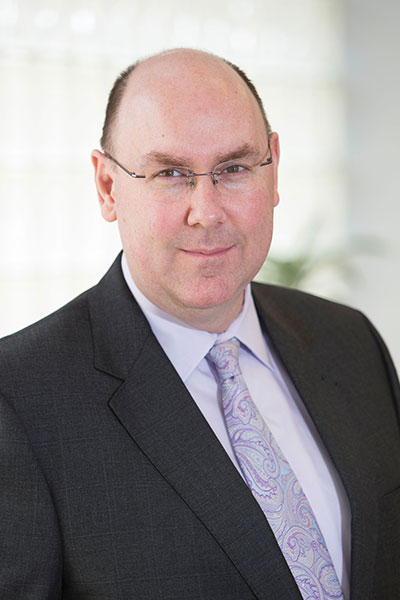Where Can I Go for Cancer Rehabilitation?
by Michael D. Stubblefield, MD
There are more than 15.5 million cancer survivors in the United States. This number will increase to an estimated 20 million by the year 2026. Greater than half of these survivors will experience complications of cancer and its treatment, which can profoundly affect their function and quality of life. Moreover, finding rehabilitation services to help improve function and quality of life after cancer can be a challenge for many survivors.
The issues resulting from cancer and its treatment are many. They may include weakness, pain, sensory abnormalities, diminished cognitive function, and a host of other disorders. For instance, more than half of women with breast cancer will experience shoulder problems, including pain and restricted range of motion, following treatment. Others will develop lymphedema, nerve injury, memory problems, or joint aches.
Each type of cancer and its treatment are associated with a unique set of functional issues. Recognizing that post-treatment issues are not necessarily “normal” and often can be effectively treated or managed is a key first step on the journey to recovery.
The next step is most likely cancer rehabilitation. Cancer rehabilitation can help survivors obtain and maintain the best possible physical, social, psychological, and vocational functioning within the limits created by cancer and its treatments. Many clinicians specialize in cancer rehabilitation, including physicians, physical therapists, occupational therapists, speech-language pathologists, and neuropsychologists. Often, a team of clinicians is needed to achieve the best outcome since multiple problems requiring multiple skillsets can exist simultaneously.
♦ Cancer rehabilitation physicians (also known as physiatrists) are experts at identifying, evaluating, and treating the nerve, muscle, pain, and functional issues caused by cancer and its treatment. Cancer rehabilitation physicians can order and interpret imaging, such as MRIs, and laboratory studies to help confirm the exact cause of a given problem. They can prescribe medications, order therapy, perform injections, and offer other treatments to aid recovery. To provide safe and effective care, cancer rehabilitation physicians must understand not only cancer and its treatment but also how additional non-cancer-related medical problems, like arthritis, heart disease, or diabetes, can affect rehabilitation efforts.
♦ Physical therapists can help cancer survivors reduce pain and restore mobility by developing and monitoring therapeutic exercise programs designed to improve strength, endurance, flexibility, coordination, and overall mobility. PTs with specialized training can also help remove tissue restrictions to movement (myofascial release) and reduce lymphedema using specialized massage, wrapping, and other techniques.
♦ Occupational therapists can help cancer survivors maximize participation in activities of daily living using therapeutic activities and adaptive strategies. Some are trained in the treatment of lymphedema and others in the management of cognitive dysfunction.
♦ Speech-language pathologists are specialists that evaluate and treat speech and swallowing disorders that can occur in many cancer survivors. They can perform specialized swallowing studies and teach exercises to help improve speech and swallowing.
♦ Neuropsychologists use specialized testing to identify cognitive deficits, like chemo brain, that can occur in cancer survivors. They also help design and monitor treatment strategies to improve cognitive function.
Finding the right cancer rehabilitation services can be difficult for many survivors. You should start by discussing your functional issues with your cancer care team. Your oncology clinicians may already have a network of rehabilitation specialists they can recommend who are suited to your individual needs. Most large medical centers will have outpatient therapy services to treat common disorders, such as peripheral neuropathy and shoulder dysfunction. Some will also have lymphedema services. Such services may not be cancer specific, but, often, they are all that is needed for survivors with minimal and uncomplicated cancer- and treatment-related difficulties.
People with more severe and complex issues are best served by visiting a cancer rehabilitation physician. Such physicians are more likely to have the skill and experience needed to perform a comprehensive evaluation and devise a safe and effective treatment strategy. Unfortunately, there are not nearly as many cancer rehabilitation physicians as other cancer rehabilitation clinicians, such as physical therapists, for instance. An internet search may help you find a cancer rehabilitation physician near you.
While traveling to see such a physician is a burden, it may be well worth the time, effort, and expense if the visit results in a safe, comprehensive, and effective treatment plan. Cancer rehabilitation physicians can often coordinate care at a distance and help find other clinicians with key skills to aid in functional recovery.

Dr. Michael Stubblefield is the medical director of the Cancer Rehabilitation Program at Kessler Institute for Rehabilitation in northern New Jersey, the national medical director of Cancer Rehabilitation at Select Medical, and the national medical director of the ReVital Cancer Rehabilitation Program. A leader in the field of cancer rehabilitation, he uses his diagnostic and therapeutic medical skills to restore function and quality of life to cancer survivors.
This article was published in Coping® with Cancer magazine, January/February 2017.


